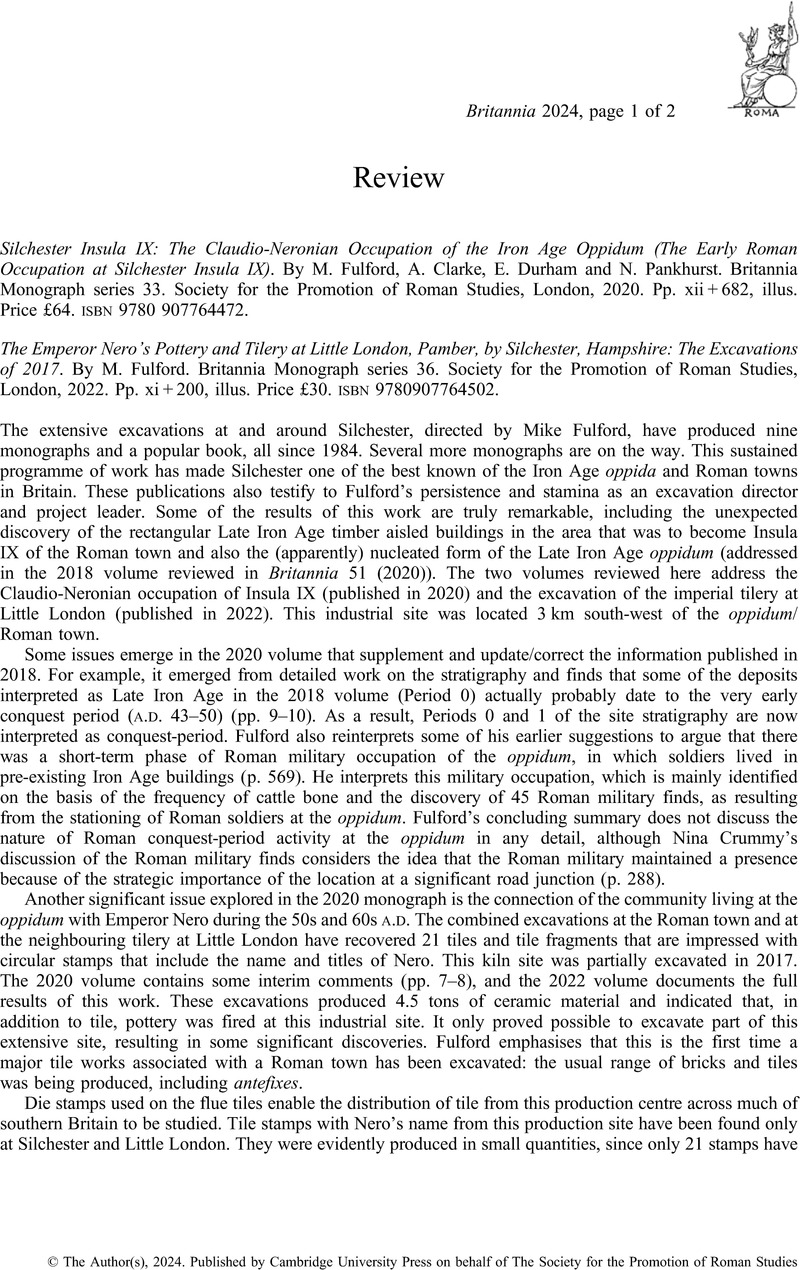No CrossRef data available.
Silchester Insula IX: The Claudio-Neronian Occupation of the Iron Age Oppidum (The Early Roman Occupation at Silchester Insula IX). By M. Fulford, A. Clarke, E. Durham and N. Pankhurst. Britannia Monograph series 33. Society for the Promotion of Roman Studies, London, 2020. Pp. xii + 682, illus. Price £64. isbn 9780 907764472. - The Emperor Nero's Pottery and Tilery at Little London, Pamber, by Silchester, Hampshire: The Excavations of 2017. By M. Fulford. Britannia Monograph series 36. Society for the Promotion of Roman Studies, London, 2022. Pp. xi + 200, illus. Price £30. isbn 9780907764502.
Review products
Published online by Cambridge University Press: 31 May 2024
Abstract

- Type
- Reviews
- Information
- Copyright
- Copyright © The Author(s), 2024. Published by Cambridge University Press on behalf of The Society for the Promotion of Roman Studies


